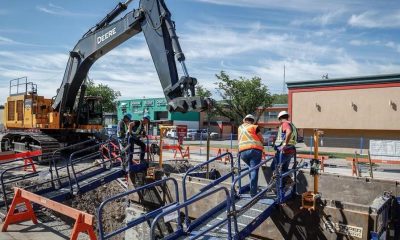Science
The sunniest study spaces on campus
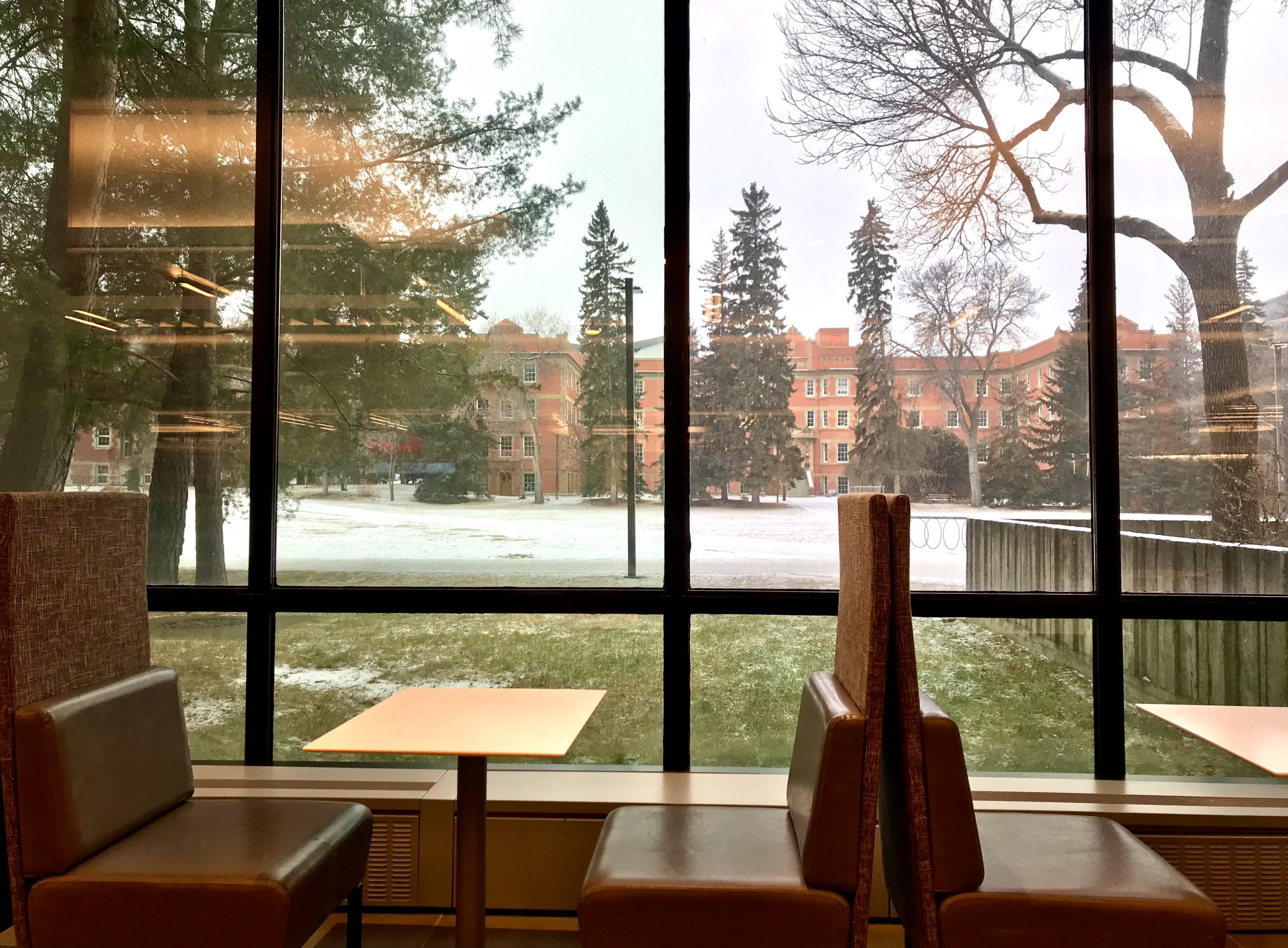
I like to always study in a well-lit space, preferably with natural sunlight. This is a characteristic that I share with sunflowers, which have a directional response to the sun and track sources of light.
Moderate exposure to sunlight can have health benefits, such as strengthening the immune system and elevating our mood. I always feel happier and more motivated to study when I am close to a window or in a space with plenty of sunlight. I find natural light especially helpful when I’ve only had a few hours of sleep the night before. Seeing the sun shine helps me stay awake to finish my schoolwork.
I arrive on campus early in the morning for classes or to study, and I leave late when it is already dark. This is particularly the case during winter when there are fewer hours of light in the day. Other than the time I spend outside walking to class, I do not get to enjoy much sunlight. This is why I try to study and have lunch in places where I can stay warm by being inside but still enjoy the sun’s rays.
An extra benefit of these study spaces is that many are connected by pedways, so you can visit several (and even go to class) without having to walk outside!
CAB (central Academic Building)
First floor (near Main Quad entrance)
- Two Tim Hortons close by – easy to grab a snack or drink while studying
- Tables with sofas to study by yourself with plenty of space or to study together with a friend
- Vending machines nearby
BONUS: View to Main Quad: You can enjoy the natural scenery of campus while studying, looking at the squirrels running up the trees, the birds flying by, the grass covered in green or white colours, and students passing by.
0 level (basement)
- Tables with sofas right beside the windows
- Tall tables and chairs with overhead lights for additional illumination
- Plenty of outlets to charge your devices while studying
- Vending machines and a small food court nearby
CAB – Cameron Pedway
- Close to a Starbucks – easy to grab a coffee or a snack
- Very close to an InfoLink booth, easy access to ask any questions about student life, campus groups or directions to different buildings
- View of the different campus trees
CCIS (Centennial Centre for Interdisciplinary Science)

Main level
- Sofas to study with friends or by yourself with plenty of space
- View of the natural scenery of Main Quad
- Near a Starbucks
BONUS: While studying, you can enjoy the scientific and artistic construction and exhibits in the building, such as the terrazzo floor designed by Scott Parsons and the Plesiosaur, a cretaceous sea monster spanning 50 feet from head to tail!
Level 2
- View of the scale model of the solar system – the planets inspire imagination
- View to part of Main Quad, with trees in sight
Cameron Library

Second floor
- Collaborative space of the library to study with friends
- Plenty of outlets available
- Different types of furniture for diverse study needs
- View to the natural scenery of trees, including tall pines
Fourth floor
- Quiet study space for the times you need to concentrate
- Individual study desk to avoid distractions
- A section with plenty of outlets per individual desk
- Individual desks in this section with computers available, which can be helpful when you need an additional screen to study or when you do not bring your laptop to campus
BONUS: One of my favourite places in this section is sitting close to the windows because I can directly get the sunrays, especially when it is too cold to go outside.
Agriculture/Forestry Centre

ALES atrium
- One of my favourite study spots during the winter – it receives sunlight from all points and angles
- A lot of plants and green decorations (this space makes me feel that I am studying inside a greenhouse!)
- You can enjoy watching even more plants by looking outside, with a view of plants and many pines
- Vending machine close by
SUB (Student’s Union building)

Atrium and Stairs
- Colourful bean bag chair sofas with outlets close by
- Additional sofas to study with friends or enjoy lunch
- Food court and vending machines close by
6th floor
- Great view of all of campus – see the different buildings covered in snow or leaves
- One of my favourite spots to study during sunrise and sunset times, as I can appreciate the different colours of the sky being on the higher floors of the building
ETLC (Engineering Teaching and Learning Complex)

ECERF (Electrical and Computer Engineering Research Facility) Level 2: Rooms W2 – 101 and W2 – 110
- Space for quiet collaboration and studying
- Tables and chairs with wheels to facilitate arranging the space for studying in groups or collaboration on a project
- Parts of the room have a view of the road and trees – you can see birds standing on the branches
- Plenty of outlets on the ground to charge your devices when necessary
- A food court nearby that includes a Tim Horton’s
BONUS: There are whiteboards with wheels to move them around as necessary to draw diagrams while studying or explain a topic to your peers while reviewing for an exam. You can write on both sides of the whiteboard. (You need to bring your own markers and eraser.)
ETLC Level 2: Quiet Study Area
- A quiet study space to study without distractions
- Spacious tables with multiple chairs
- Plenty of outlets
- View to the natural scenery of the Engineering Quad
ECERF (near parkade elevator access)
- View of trees to observe the squirrels and birds
- Vending machines nearby
- Close to the Engineering Geer Store
- Various outlets available
ETLC Level 2: En Cana Engineering Learning Common
- Large tables to study with plenty of space and enough room to collaborate with others
- Multiple outlets at the tables and on the floor
- Several sofas with tables for reading comfortably
- View of the road and many of the trees – you can watch as they get covered with snow
Natural Resources Engineering Facility: Level 0 (basement)
- Lots of sofas with tables
- Several tall tables with chairs
- In front of a Starbucks, so it is easy to grab a snack
DICE (Donadeo Innovation Centre for Engineering)

8th floor (near the Patrik D Daniel/Enbridge Engineering Conference Room)
- Water fountain close by
- View of the Engineering Quad
8th floor (near the Fred Pheasey Engineering CommonsFeaturing:
- View of the River Valley and part of the city
- Plenty of seating
- One of my favourite places to study during sunrise and sunset hours — I am able to distinguish and neatly appreciate all the colours in the sky and how they change throughout the day
BONUS: This view of the river allows me to more deeply appreciate nature, which serves as a reminder to care for the environment and the animals that inhabit these places.
Rutherford Library
Second floor
- Plenty of outlets available
- View of all the natural scenery of the Arts and Business Quad
- Collaborative space – you can study with your friends or work on group projects
ECHA (Edmonton Clinic Health Academy)

First Floor (near NE Entrance)
- Starbucks nearby
- View of the road – study scenery as you watch students and cars pass by
Second Floor
- Tables and couches to adapt to all study needs
- Large windows that allow a lot of sunshine to come in, even when it is cloudy outside
- Desks with a division down the middle to study without distractions
Geoffrey and Robyn Sperber Health Sciences Library
First floor (near the entrance)
- Quiet zone for studying without distractions
- Outlets available in different locations
- New study space in the recently inaugurated health sciences library
Business Building – Main Level
Carruthers Student Commons
- Chairs and tables with wheels to move around
- Plenty of outlets
- Various sofas on the upper and main floor
- View of the natural landscape of the Arts and Business Quads and view of part of the Old Arts Building
- Collaborative spaces such as study rooms available, which can be a great space to work on team projects

Science
Asteroid Apophis will visit Earth in 2029, and this European satellite will be along for the ride

The European Space Agency is fast-tracking a new mission called Ramses, which will fly to near-Earth asteroid 99942 Apophis and join the space rock in 2029 when it comes very close to our planet — closer even than the region where geosynchronous satellites sit.
Ramses is short for Rapid Apophis Mission for Space Safety and, as its name suggests, is the next phase in humanity’s efforts to learn more about near-Earth asteroids (NEOs) and how we might deflect them should one ever be discovered on a collision course with planet Earth.
In order to launch in time to rendezvous with Apophis in February 2029, scientists at the European Space Agency have been given permission to start planning Ramses even before the multinational space agency officially adopts the mission. The sanctioning and appropriation of funding for the Ramses mission will hopefully take place at ESA’s Ministerial Council meeting (involving representatives from each of ESA’s member states) in November of 2025. To arrive at Apophis in February 2029, launch would have to take place in April 2028, the agency says.
This is a big deal because large asteroids don’t come this close to Earth very often. It is thus scientifically precious that, on April 13, 2029, Apophis will pass within 19,794 miles (31,860 kilometers) of Earth. For comparison, geosynchronous orbit is 22,236 miles (35,786 km) above Earth’s surface. Such close fly-bys by asteroids hundreds of meters across (Apophis is about 1,230 feet, or 375 meters, across) only occur on average once every 5,000 to 10,000 years. Miss this one, and we’ve got a long time to wait for the next.
When Apophis was discovered in 2004, it was for a short time the most dangerous asteroid known, being classified as having the potential to impact with Earth possibly in 2029, 2036, or 2068. Should an asteroid of its size strike Earth, it could gouge out a crater several kilometers across and devastate a country with shock waves, flash heating and earth tremors. If it crashed down in the ocean, it could send a towering tsunami to devastate coastlines in multiple countries.
Over time, as our knowledge of Apophis’ orbit became more refined, however, the risk of impact greatly went down. Radar observations of the asteroid in March of 2021 reduced the uncertainty in Apophis’ orbit from hundreds of kilometers to just a few kilometers, finally removing any lingering worries about an impact — at least for the next 100 years. (Beyond 100 years, asteroid orbits can become too unpredictable to plot with any accuracy, but there’s currently no suggestion that an impact will occur after 100 years.) So, Earth is expected to be perfectly safe in 2029 when Apophis comes through. Still, scientists want to see how Apophis responds by coming so close to Earth and entering our planet’s gravitational field.
“There is still so much we have yet to learn about asteroids but, until now, we have had to travel deep into the solar system to study them and perform experiments ourselves to interact with their surface,” said Patrick Michel, who is the Director of Research at CNRS at Observatoire de la Côte d’Azur in Nice, France, in a statement. “Nature is bringing one to us and conducting the experiment itself. All we need to do is watch as Apophis is stretched and squeezed by strong tidal forces that may trigger landslides and other disturbances and reveal new material from beneath the surface.”
By arriving at Apophis before the asteroid’s close encounter with Earth, and sticking with it throughout the flyby and beyond, Ramses will be in prime position to conduct before-and-after surveys to see how Apophis reacts to Earth. By looking for disturbances Earth’s gravitational tidal forces trigger on the asteroid’s surface, Ramses will be able to learn about Apophis’ internal structure, density, porosity and composition, all of which are characteristics that we would need to first understand before considering how best to deflect a similar asteroid were one ever found to be on a collision course with our world.
Besides assisting in protecting Earth, learning about Apophis will give scientists further insights into how similar asteroids formed in the early solar system, and, in the process, how planets (including Earth) formed out of the same material.
One way we already know Earth will affect Apophis is by changing its orbit. Currently, Apophis is categorized as an Aten-type asteroid, which is what we call the class of near-Earth objects that have a shorter orbit around the sun than Earth does. Apophis currently gets as far as 0.92 astronomical units (137.6 million km, or 85.5 million miles) from the sun. However, our planet will give Apophis a gravitational nudge that will enlarge its orbit to 1.1 astronomical units (164.6 million km, or 102 million miles), such that its orbital period becomes longer than Earth’s.
It will then be classed as an Apollo-type asteroid.
Ramses won’t be alone in tracking Apophis. NASA has repurposed their OSIRIS-REx mission, which returned a sample from another near-Earth asteroid, 101955 Bennu, in 2023. However, the spacecraft, renamed OSIRIS-APEX (Apophis Explorer), won’t arrive at the asteroid until April 23, 2029, ten days after the close encounter with Earth. OSIRIS-APEX will initially perform a flyby of Apophis at a distance of about 2,500 miles (4,000 km) from the object, then return in June that year to settle into orbit around Apophis for an 18-month mission.
Related Stories:
Furthermore, the European Space Agency still plans on launching its Hera spacecraft in October 2024 to follow-up on the DART mission to the double asteroid Didymos and Dimorphos. DART impacted the latter in a test of kinetic impactor capabilities for potentially changing a hazardous asteroid’s orbit around our planet. Hera will survey the binary asteroid system and observe the crater made by DART’s sacrifice to gain a better understanding of Dimorphos’ structure and composition post-impact, so that we can place the results in context.
The more near-Earth asteroids like Dimorphos and Apophis that we study, the greater that context becomes. Perhaps, one day, the understanding that we have gained from these missions will indeed save our planet.

Science
McMaster Astronomy grad student takes a star turn in Killarney Provincial Park
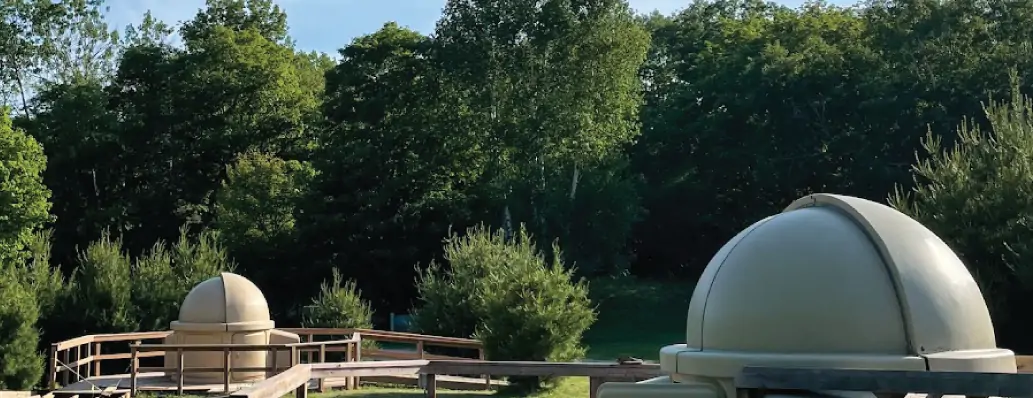
Astronomy PhD candidate Veronika Dornan served as the astronomer in residence at Killarney Provincial Park. She’ll be back again in October when the nights are longer (and bug free). Dornan has delivered dozens of talks and shows at the W.J. McCallion Planetarium and in the community. (Photos by Veronika Dornan)
BY Jay Robb, Faculty of Science
July 16, 2024
Veronika Dornan followed up the April 8 total solar eclipse with another awe-inspiring celestial moment.
This time, the astronomy PhD candidate wasn’t cheering alongside thousands of people at McMaster — she was alone with a telescope in the heart of Killarney Provincial Park just before midnight.
Dornan had the park’s telescope pointed at one of the hundreds of globular star clusters that make up the Milky Way. She was seeing light from thousands of stars that had travelled more than 10,000 years to reach the Earth.
This time there was no cheering: All she could say was a quiet “wow”.
Dornan drove five hours north to spend a week at Killarney Park as the astronomer in residence. part of an outreach program run by the park in collaboration with the Allan I. Carswell Observatory at York University.
Dornan applied because the program combines her two favourite things — astronomy and the great outdoors. While she’s a lifelong camper, hiker and canoeist, it was her first trip to Killarney.
Bruce Waters, who’s taught astronomy to the public since 1981 and co-founded Stars over Killarney, warned Dornan that once she went to the park, she wouldn’t want to go anywhere else.
The park lived up to the hype. Everywhere she looked was like a painting, something “a certain Group of Seven had already thought many times over.”
She spent her days hiking the Granite Ridge, Crack and Chikanishing trails and kayaking on George Lake. At night, she went stargazing with campers — or at least tried to. The weather didn’t cooperate most evenings — instead of looking through the park’s two domed telescopes, Dornan improvised and gave talks in the amphitheatre beneath cloudy skies.
Dornan has delivered dozens of talks over the years in McMaster’s W.J. McCallion Planetarium and out in the community, but “it’s a bit more complicated when you’re talking about the stars while at the same time fighting for your life against swarms of bugs.”
When the campers called it a night and the clouds parted, Dornan spent hours observing the stars. “I seriously messed up my sleep schedule.”
She also gave astrophotography a try during her residency, capturing images of the Ring Nebula and the Great Hercules Cluster.
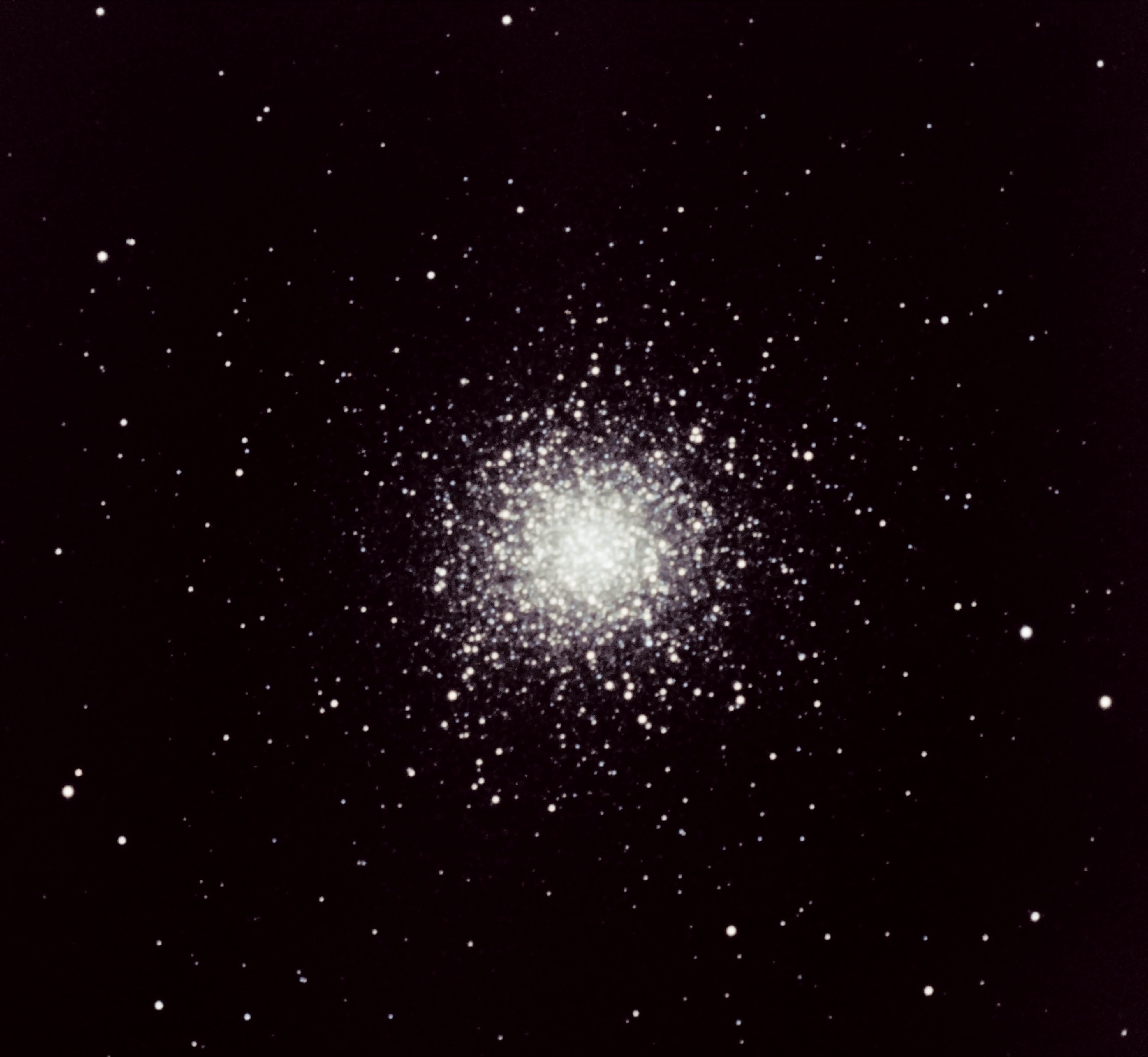
“People assume astronomers take their own photos. I needed quite a lot of guidance for how to take the images. It took a while to fiddle with the image properties, but I got my images.”
Dornan’s been invited back for another week-long residency in bug-free October, when longer nights offer more opportunities to explore and photograph the final frontier.
She’s aiming to defend her PhD thesis early next summer, then build a career that continues to combine research and outreach.
“Research leads to new discoveries which gives you exciting things to talk about. And if you’re not connecting with the public then what’s the point of doing research?”

Science
Where in Vancouver to see the ‘best meteor shower of the year’
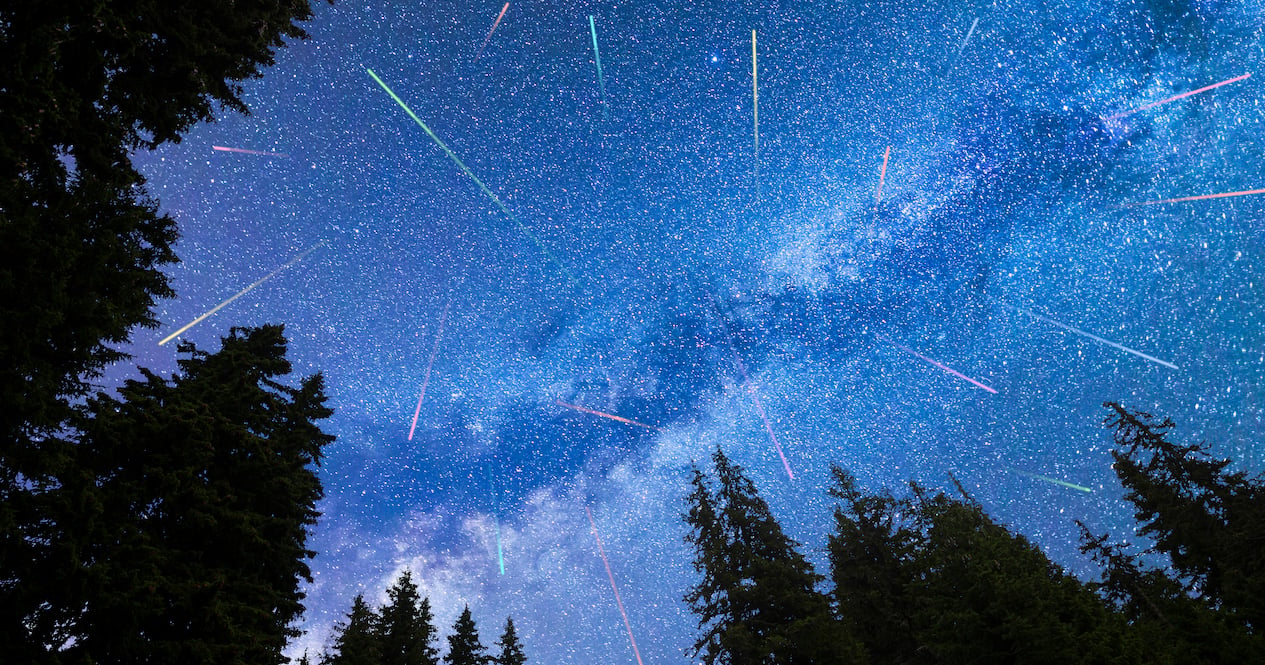
Eyes to the skies, Vancouver, because between now and September 1st, stargazers can witness the ‘best meteor shower of the year’ according to NASA.
Known for its “long wakes of light and colour,” the Perseid Meteor Shower will peak on August 12th, 2024 – so consider this list a great place to start if you’re in search of a prime stargazing spots!
Grab your lawn chairs and blankets, and seek as little light pollution as possible. Here are some ideal stargazing spots to check out in and around Vancouver this summer.
Recent Posts:
This island with clear waters has one of the prettiest towns in BC
10 beautiful lake towns to visit in BC this summer
Wreck Beach
If you’re willing to brave the stairs and the regulars, it doesn’t get much better than Wreck Beach for watching the skies – for both sunsets and stargazing. The west-facing views practically eliminate immediate distractions from the city lights.
Spanish Banks Park
Spanish Banks is the perfect mixture of convenience and quality. Its location offers unobstructed views of the skies above, and it’s far enough away from downtown to mitigate some of the light pollution.
Burnaby Mountain Park
If it’s good enough for a university observatory, it’s good enough for us. Pretty much anywhere on Burnaby Mountain will offer tremendous viewpoints, but the higher you get the better (safely).
Porteau Cove
A short drive from Vancouver gets you incredible views of the Howe Sound from directly on the water. And naturally, its distance from any nearby community makes it a prime spot for stargazing.
Cypress Mountain
In addition to having one of the best viewpoints in Vancouver period, Cypress Mountain (and the road up to it) is also a great place to watch the sky. For a double-whammy, we say that you come around sunset, then hang out while the sky gets dark. Sure, it might take a few hours, but the view is worth it.
So there you have it, stargazers! Get ready to witness a dazzling show this summer.

-

 News21 hours ago
News21 hours agoCalgary official compares strain on water system to revving car’s engine for too long
-

 Politics23 hours ago
Politics23 hours agoBloc Québécois ready to extract gains for Quebec in exchange for supporting Liberals
-
Health11 hours ago
Clickbank Nourished Mamas Guide to Postpartum | Birth Education Class in Holland
-

 News18 hours ago
News18 hours agoMediation aimed at resolving Metro Vancouver accessible transit strike underway
-

 News8 hours ago
News8 hours agoCanadaNewsMedia news September 9, 2024: Liberal caucus gathers for retreat in Nanaimo
-

 News11 hours ago
News11 hours agoCanadian Medical Association calls for more tracking of health care funds
-

 Business14 hours ago
Business14 hours agoTatiana Tarot – Make Money Online Reading Tarot
-

 News13 hours ago
News13 hours agoMediated talks aimed at resolving Metro Vancouver accessible transit strike stall




